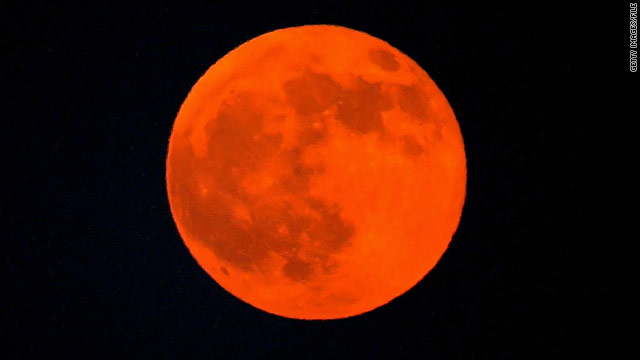Chris Dodkin
West Coast Correspondent
Heads up to the California and Australian contingents:
The eclipse will begin at 3:33 a.m. PST, when the faint outer penumbral shadow touches the moon. The eclipse will be obvious by 4:45 a.m., when the dark umbral shadow begins its trip across the moon's face. The total eclipse phase will start at 6:06 a.m. and last for 51 minutes.

In Sydney, the eclipse will begin at 10:33 p.m. Saturday evening and last most of the night. Totality is from 1:06 a.m. until 1:57 a.m. local time.
It's difficult to predict in advance how dark any particular lunar eclipse will be. It’s extremely rare for the moon to disappear completely because some sunlight always leaks past the Earth through the twilight zones.
Because this light is coming from countless sunsets on Earth, it is usually tinged reddish in color. If cloud cover on Earth is dense, very little light gets through, and we get a very dark eclipse.
Because this eclipse will be low in the western sky in North America and low in the south in Australia, there should be plenty of photo opportunities
I will be up bright and early Saturday (weather permitting) to see what I can get
The eclipse will begin at 3:33 a.m. PST, when the faint outer penumbral shadow touches the moon. The eclipse will be obvious by 4:45 a.m., when the dark umbral shadow begins its trip across the moon's face. The total eclipse phase will start at 6:06 a.m. and last for 51 minutes.

In Sydney, the eclipse will begin at 10:33 p.m. Saturday evening and last most of the night. Totality is from 1:06 a.m. until 1:57 a.m. local time.
It's difficult to predict in advance how dark any particular lunar eclipse will be. It’s extremely rare for the moon to disappear completely because some sunlight always leaks past the Earth through the twilight zones.
Because this light is coming from countless sunsets on Earth, it is usually tinged reddish in color. If cloud cover on Earth is dense, very little light gets through, and we get a very dark eclipse.
Because this eclipse will be low in the western sky in North America and low in the south in Australia, there should be plenty of photo opportunities
I will be up bright and early Saturday (weather permitting) to see what I can get



